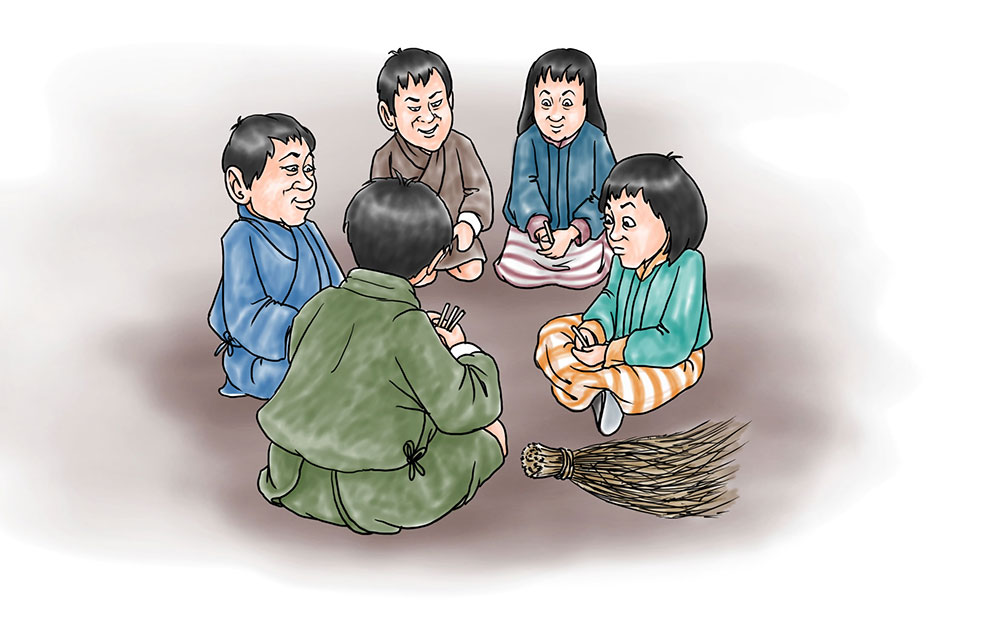Ugyen Penjor
Not long ago, when we had no smart phones, tabs or TV, a favourite past time at home, especially after dinner, was playing the Chim Nyem game, a stick game that is fun, easy and engaging, and readied without much resources.
Depending on the number of participants a small stick about 7cm, usually broken from the broom made of tall grass, is marked from one to five or six (number of participant). Without pen or pencil, a small cut is made on the stick for one. Two on the other, and five on the last if five members are playing.
The starter holds the sticks in his palm hiding the marking and asks other to pick in turns. The fun begins with the player who picks the stick marked “one”. He or she crows like a rooster to announce he/she got the number one.
The rule is to identify the person who picked stick marked two. If a wrong player is pointed out, it is shama time.
Shama is a form of beating using two fingers to hit on the palm. A shama can be painful when hit by those with strong fingers. Usually, the two middle fingers are used – one as lever to hit the hardest shama. When children are involved, a shama is hit using the little finger as it has no force.
The game and shama continues until the second last player is identified. The game lasts for about a few minutes, but depends on luck and number of players. It is repeated until it is bed time.
“It is a good past time then. In today’s context, it would be a good game to distract the family from their smart phones and laptops for a good family time,” says Kinley when reminded about the game.
Kinley’s sister recalls when Kinley, the third youngest, picked stick number one thrice in a row and cried because of the fear of shama.
With social media ruling or ruining family time, the games we used to play could be a game changer, but we have to keep updated on our various social media applications.
Game: Chim Nyim
(Stick Number Guessing)
Materials:
Small sticks (approximately 7cm in length).
Each stick is marked with a small cut, representing the numbers one to five or six, depending on the number of participants.
Rules:
Prepare the sticks by making a small cut on each stick to indicate a specific number.
One player holds the sticks in his/her palm, hiding the markings, and asks the other players to pick a stick, one at a time.
The game begins with the player who picks the stick marked “one.” This player crows like a rooster to announce that he/she has picked the stick marked number one.
If the player’s guess is incorrect, he/she receives a light hit on the palm (shama) with the fingers as a penalty.
The game continues with the remaining players taking turns and guessing until someone correctly identifies the player with the stick marked “two”. The next player makes the guess and continues until all are identified.


